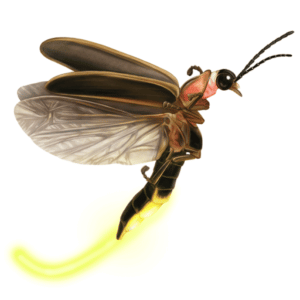Notice: Below is a list of 0 important links included on this page.
Please note that while screen readers have made significant strides, they may still lack full support for optimal web accessibility.

You must be logged in to post a comment.
This is a project of the Xerces Society, working in collaboration with the IUCN SSC Firefly Specialist Group and New Mexico BioPark Society.
Copyright © 2025 The Xerces Society •1631 NE Broadway Street, #821 • Portland OR 97232 USA
Thanks for submitting this firefly observation, Gordon! What a neat sighting.
Your description of abundant, low flashes that synchronized fits best with Photuris frontalis, common name “snappy single sync”. They are found in southern Louisiana, and are active around this time of year. Having a photo of a lightning bug in hand would help to confirm.
One note about the flash pattern terminology:
You can refer to the diagrams on the back of the Firefly Atlas data-sheet for a visual reminder of what each term means.
For Photuris frontalis, I would expect flash pattern details that looked something like this:
Flash pattern period: 0.75-1 second
Flash duration: 0.1 second, very quick, or “not recorded” (It would be very hard to measure!)
Flash interval: 0.9 seconds (flash pattern period minus flash duration)
I know these terms can be confusing, but they are necessary because of fireflies with more complex flash patterns (for example ones with long glows or multi-pulse flash patterns).